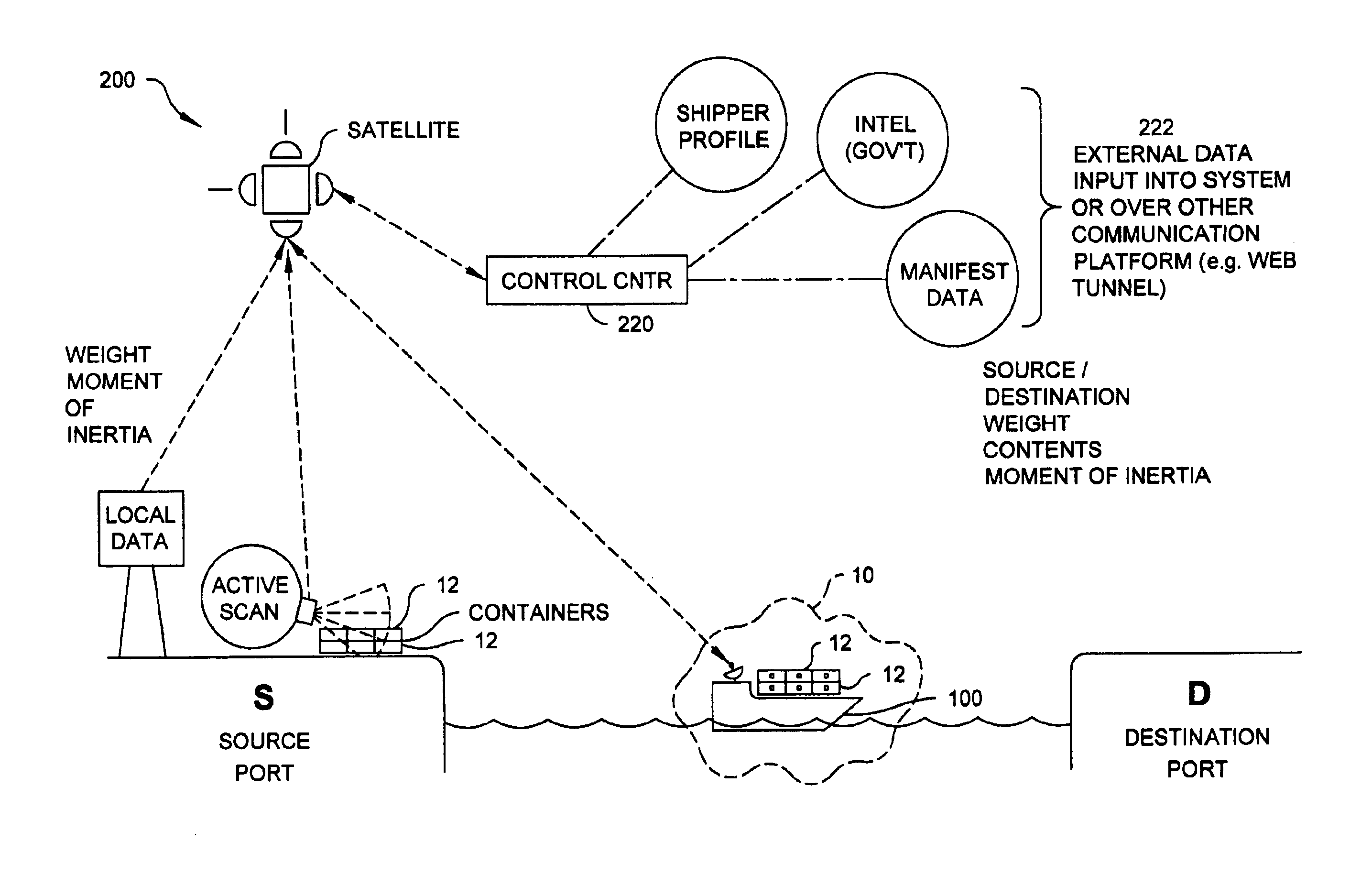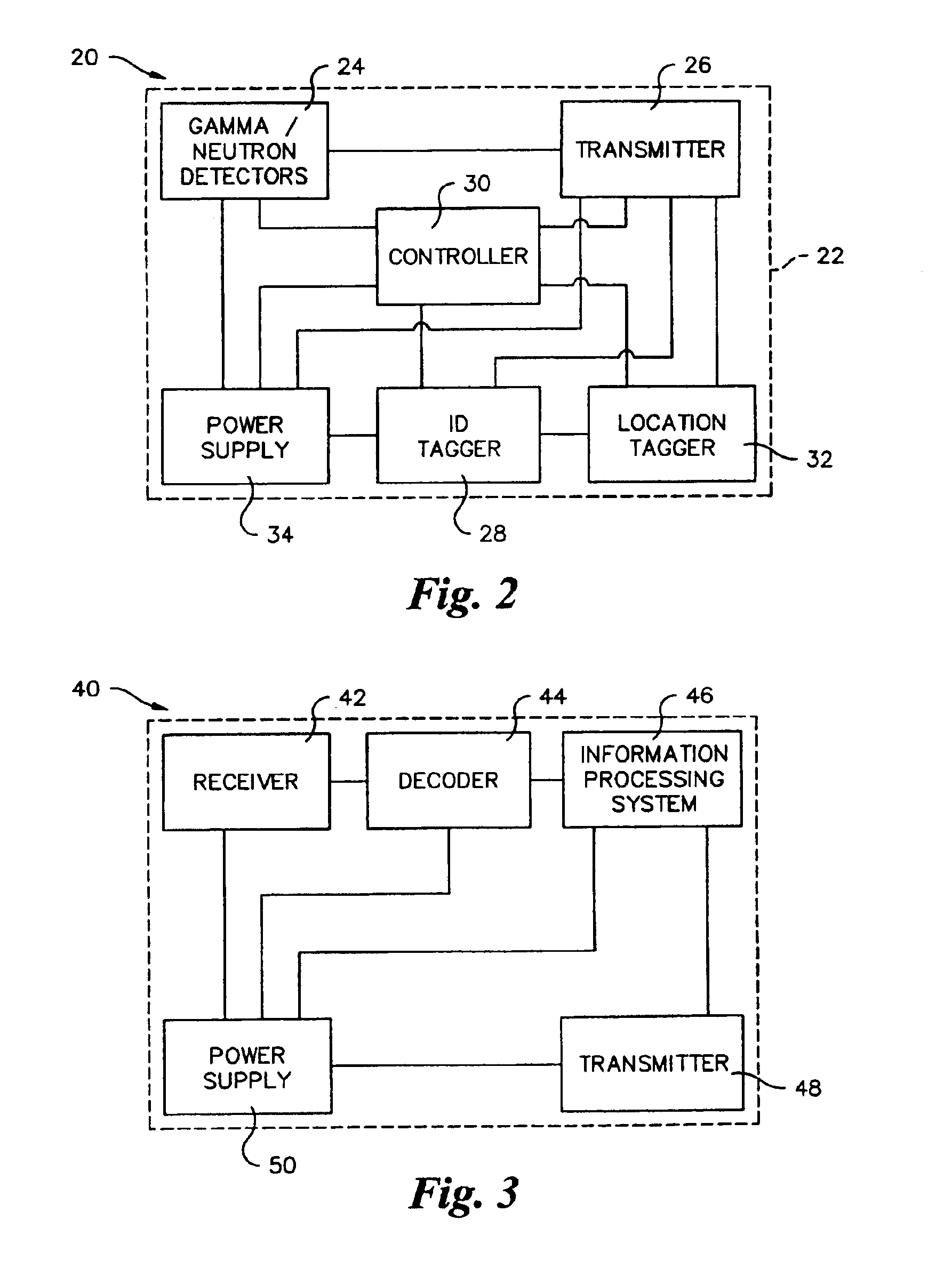Apparatus and method for asynchronously analyzing data to detect radioactive material
a radioactive material and data analysis technology, applied in the field of apparatus and methods for asynchronous analysis of data to detect nuclear weapons and/or radioactive materials, can solve the problems of slowing down the process of images, difficult, if not impossible, and inability to use active scanning inspection equipment, so as to reduce false positives, increase sensitivity readings, and reduce false negatives
- Summary
- Abstract
- Description
- Claims
- Application Information
AI Technical Summary
Benefits of technology
Problems solved by technology
Method used
Image
Examples
Embodiment Construction
[0020]Referring to the drawings, wherein the same reference numerals are employed for indicating like elements throughout the several figures, there is shown in FIGS. 1-3, a schematic representation of a cargo container monitoring system 10 in accordance with preferred embodiments of the present invention. The cargo container monitoring system 10 (FIG. 1) includes a plurality of radioactive material detection apparatuses 20 (FIG. 2) and a master unit / master module 40 (FIG. 3). Each radioactive material detection apparatus 20 includes a transmitter 26, a radiation detector or sensor 24, a detection controller 30 and an identification tag or ID tagger 28. Each transmitter 26 is capable of transmitting information in correspondence with a signal. Preferably, the transmitter 26 transmits information using radio frequency, infrared, light waves, microwaves, electrical voltage, electrical current and the like. Each radiation sensor 24 has a sensor output and is configured to detect radiat...
PUM
 Login to View More
Login to View More Abstract
Description
Claims
Application Information
 Login to View More
Login to View More - R&D
- Intellectual Property
- Life Sciences
- Materials
- Tech Scout
- Unparalleled Data Quality
- Higher Quality Content
- 60% Fewer Hallucinations
Browse by: Latest US Patents, China's latest patents, Technical Efficacy Thesaurus, Application Domain, Technology Topic, Popular Technical Reports.
© 2025 PatSnap. All rights reserved.Legal|Privacy policy|Modern Slavery Act Transparency Statement|Sitemap|About US| Contact US: help@patsnap.com



